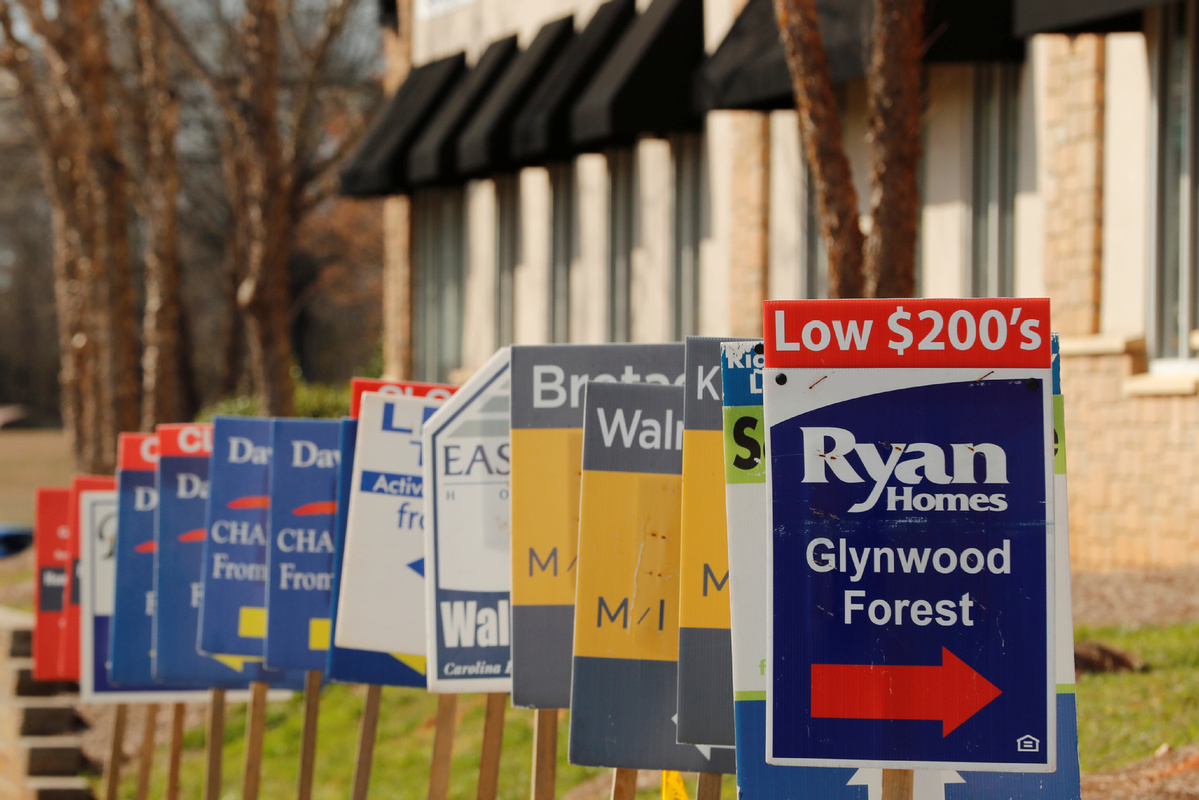Mortgages increase, hinting at housing rebound
By SCOTT REEVES in New York | China Daily Global | Updated: 2020-05-29 11:25

US mortgage applications increased by 2.7 percent for the week ended May 22 from the previous week, underscoring the housing market's tentative steps toward a rebound.
Mortgage applications are a leading indicator for the housing market because financing must be lined up before buying a house, while sales are a snapshot of current activity.
"The housing market is continuing its path to recovering as various states reopen, leading to more buyers resuming their home search," said Joel Kan, associate vice-president for economic and industry forecasting at the Mortgage Bankers Association (MBA), in a statement.
"It was the sixth consecutive weekly increase and a jump of 54 percent since early April. The purchase loan amount has increased steadily in recent weeks and is now at its highest level since mid-March."
While the trend is up, there's still a long way to go before the mortgage market recovers, MBA statistics show.
Applications in New York state were up 19.7 percent for the week ending May 22 from the previous week, but still 16.9 percent below activity for the same week a year ago.
In Washington state, last week's mortgage applications increased 3.5 percent from the previous week, but were 23.1 percent below activity for the same week in 2019.
California's overall performance was stronger. Last week's applications in the Golden State were up 11.6 percent from the previous week, but remained 1.7 percent below activity for the same week a year ago.
The average interest rate for a 30-year fixed-rate mortgage with a balance of $510,400 ticked up to 3.42 percent from 3.41 percent. The average interest rate for jumbo mortgages, or those greater than $510,400 for a 30-year term, increased to 3.71 percent from 3.66 percent, the MBA reported.
Pending home sales fell in April for the second straight month, the National Association of Realtors (NAR) reported.
Every major region experienced a month-over-month drop and a sharp decline in year-over-year activity, including a 48.2 percent decline in the Northeast, a 15.9 percent decline in the Midwest, a 15.4 percent decline in the South and a 20 percent decline in the West.
Lawrence Yun, chief economist for the NAR, said the downturn was expected, as people stayed home during the coronavirus outbreak and the economy sank, but he expects the market to rebound.
"While coronavirus mitigation efforts have disrupted contract signings, the real estate industry is 'hot' in affordable price points with the wide prevalence of bidding wars for limited inventory," he said in a statement.
"In the coming months, buying activity will rise as states reopen and more consumers feel comfortable about home buying in the midst of social distancing measures."
Citing the "surprising resiliency" of the housing market, Yun upgraded the outlook for sales and prices for the remainder of the year.
"Home sales are expected to decline by only 11 percent in 2020 with the median home price projected to increase by 4 percent," Yun said. "In the prior forecast, sales were expected to fall by 15 percent and there was no increase in home prices."
The NAR will release May's sales figures in late June.
Moving further back in the housing supply chain, new-house construction also may be about to rebound.
Lumber futures have jumped since early April, driven by solid sales at home improvement stores and cutbacks at mills.
Much like oil producers capping wells when supply exceeded demand and prices fell, lumber mills in the Pacific Northwest and the Deep South as well as Canada curtailed production in February and March as prices plunged and it appeared the summer homebuilding season would be severely curtailed.
However, lumber futures on the Chicago Mercantile Exchange are up about 45 percent from the April 1 low and about 8.9 percent higher than a year ago, suggesting builders are betting on a rebound in the new-home market.
The initial steps of the housing industry's rebound play out against an economic shutdown amid the COVID-19 pandemic.
A total of 40.8 million workers, including 2.1 million last week, have filed unemployment claims in the last 10 weeks — the largest number in history, according to statistics compiled by the US Labor Department.
The Federal Reserve Bank has slashed interest rates to encourage lending and pumped billions of dollars into the financial system to stabilize the economy.
The downside: Interest rates for individual savers have tumbled below 1 percent for most money market accounts and little more than 1 percent for many certificates of deposit.
Congress has passed stimulus bills intended to ease the financial strain of the pandemic, including sending $1,200 checks to qualified individuals. Members of Congress are currently assessing the need for another stimulus package.
























